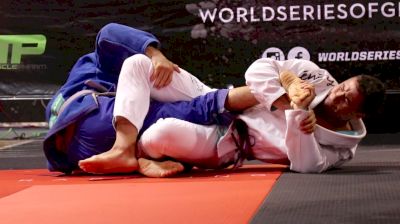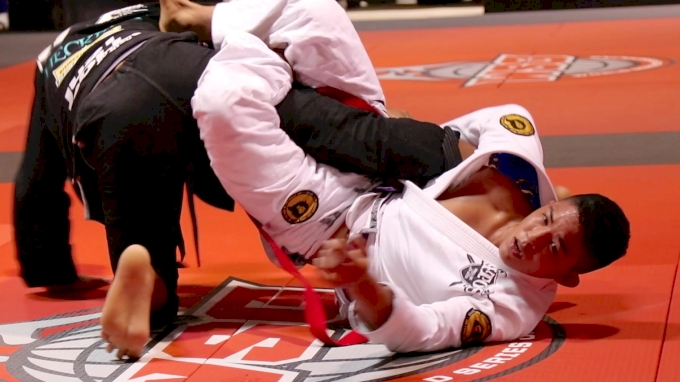Opinion: Blue & Purple Belts Should Be Able To Use "Banned" Leglocks

In most jiu-jitsu competitions the only leglock that is permitted for blue and purple belts is the straight ankle lock. Toeholds and kneebars are reserved for brown and black belts only, meaning many people don't even start learning leglocks until they're already considered "advanced" jiu-jitsu practitioners.
The second World Series of Grappling event went down last weekend and offered competitors something different to the norm.
I’m not talking about the fact they combined blue and purple belts together, or the fact that there were only two weight classes (-180lbs and +180lbs). I’m not even referring to the grand prize of $5000 for the winners.
World Series of Grappling allowed blue and purple belts to use "banned" leglocks, techniques that are otherwise prohibited. Ankle locks, kneebars, toeholds were all fair game, and even reaping the leg was permitted.
Predictably, we saw a lot of the colored belts take advantage of this opportunity and go after the lower limbs. Some of them were especially happy about the prospect.
"I really liked that they allowed us to attack leg locks," said -180lb runner-up Andy Murasaki. "Because it allows us to open up our game and to diversify our jiu-jitsu. What I like most about it is it allows for a greater chance for submissions and that makes more exciting for both the competitors and the spectators."

Until a couple of years ago leglocks were not considered anything special. Aside from a handful of experts who operated at the fringes of the main grappling competition scene, leglocks were just another option available.
That changed when the submission-only movement came along and high-profile grapplers like the Danaher Death Squad members showed how effective they can be.
In the gi, leglocks are still very much limited by the rules. Tournaments such as IBJJF and UAEJJF do not allow reaping, and twisting leglocks are illegal at all levels.
The most common argument against allowing blue and purple belts to attack for leglocks is that there is a greater chance of injury. Another is that simply dropping back for a leglock stifles development in other areas, such as guard passing and attaining positional control.
But we didn't see anybody carried off the mats at World Series of Grappling with an injured leg, and there were still plenty of upper body submissions from both top and bottom position.
On a personal note, I'm a fan of the effectiveness of leglocks and I enjoy watching them. I also appreciate that not everybody who trains and competes in jiu-jitsu wants somebody ragging on your knees and ankles, because most of us have to go to work Monday morning and to do so on crutches is a major pain in the ass.
But at the upper levels of the sport, even among colored belts, most grapplers have good enough control over their technique and enough awareness to know what is dangerous and what is not.
And if you're competing at that level, you probably have a pretty good understanding of the risk involved.
For open tournaments aimed at the recreational grapplers where anybody can sign up, I don't see an issue in prohibiting certain techniques. But for those grapplers at the top of their game competing for cash prizes? I say let them go for "banned" leglocks.
By training leglocks early and getting familiar with them in both the gym and in competition, they will arrive at brown belt as fully-formed grapplers instead of having to learn a whole new set of skills.